- europages
- >
- COMPANIES - SUPPLIERS - SERVICE PROVIDERS
- >
- rotating brushes
Results for
Rotating brushes - Import export
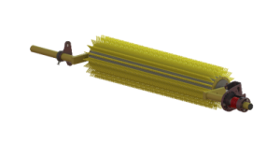
GURTEC GMBH
Germany
Belt width: 500-1400 mm Recommended speed: max. 3.0 m/s Motor power: 0.75 kW Rotational speed of brush: 145 RPM Brush material: polyurethane, steel, polypropylene, polyamide
Request for a quote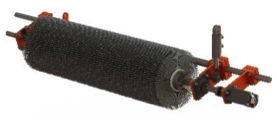
GURTEC GMBH
Germany
Hydraulic operated Rotational speed of brush: max. 150 RPM Can be adjusted by hydraulic pump – brush will be lifted to operation position by hydraulic cylinder and keep same pressure against the belt
Request for a quote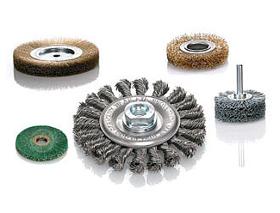
KULLEN-KOTI GMBH
Germany
When circular brushes start to rotate, your production problems are solved. Whether you use them for derusting, cleaning, deburring or processing welded seams and removing hard scale and paint, they won't let you down.When there is a need to precisely process slim workpieces or profiled surfaces, single-section brushes come into their own. They are slim, aggressive and tough. The feasibility of joining several of these brushes together makes them particularly versatile. Pipeline brushes give outstanding service in the construction of oil, gas and water pipelines. They are used for cleaning up welded seams and were specially developed to deal with root-pass and fillet welds.
Request for a quote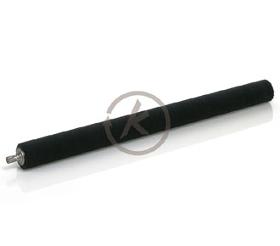
KULLEN-KOTI GMBH
Germany
The STS-spiral roller brush range from Kullen-Koti contains all measurements from small to extra large and this unbeatable selection of diameters makes this brush a totally reliable tool for light brushing tasks. Due to the high fill density and precisely ground surface it achieves outstanding results. A flawless radial true runing is a requirement in most cases to achieve the desired brush effect. Therefore the brush cores are electrodynamically pre-balanced and re-balanced according to the required RPM after assembly of the spiral brushes. The balancing quality refers to quality grade G 2.5 as per ISO 1940. As core material we have available: mild steel, stainless steel, non-ferrous metal or plastic coated steel. Fixing of the spiral coils The coils are generally mounted onto the roller cores with pressure rings (PRB) in order to prevent the brush from roating on the core. Depending on the work and the rotation speed of the brush the coils can also be spot-welded or screwed...
Request for a quote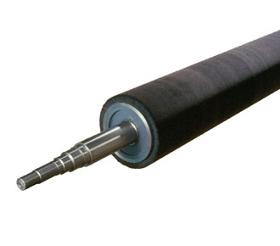
KULLEN-KOTI GMBH
Germany
The types 220 & 221 are extremly flexible in their dimension and depending on the required performance these endless spiral brush coils are mounted on core systems made of mild steel, stainless steel or non ferrous metals.Compared with other brush designs we can reach the highest possible fill density with these types and they can be applied with a maximum speed of 55 m/sec without any problems. Supposition for it, is that the roller brush cores are electrodynamically balanced after the mounting of the core according to the required rotation speed and quality G 2.5 which comes up to ISO 1940. Our roller brushes are supplied with a fill surface perfectly trimmed and/or ground for concentricity. A perfectly seated attachment of the coils on the roller core is guaranteed by the pressure or mounting ring (PRB) system, also available with removable balancing weights (PRB-AW), which prevents the brush coil from rotating on the core. In some circumstances you also could choose a...
Request for a quoteDo you sell or make similar products?
Sign up to europages and have your products listed
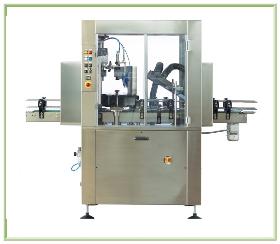
TASK ITALY SRL
Italy
Washing machine for external cleaning of glass bottles and jars. The Lab-10 model is designed for integration into bottling lines with productions of up to 1200 bottles/hour (for higher productions, other models are available up to 10,000 bottles/hour). Thanks to its integrated traction motor and compact dimensions, its installation is simple and possible in any condition. The machine is equipped with a series of devices for the thorough washing of all parts of the bottle: - Adjustable-height upper brush for cap washing - Lower brush for bottom cleaning - High-speed rotating central vertical brush for washing the entire bottle surface Once the bottle washing is completed, two stainless steel blowing blades, powered by a high-pressure fan, ensure the drying of the entire surface for labeling.
Request for a quote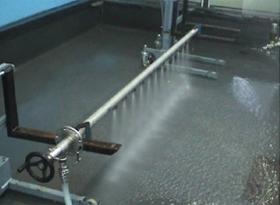
IKEUCHI EUROPE B.V.
Netherlands
Features Self-cleaning nozzle header. Inner brushes for nozzle cleaning are built-in. By rotating inner brushes, nozzle orifices are cleaned thoroughly, and foreign objects inside the pipe are flushed out through the drain. Available in the manual brush-cleaning type (the inner brushes are rotated by turning handwheel) and air-driven automatic type (which allows remote control of spray and cleaning modes). *1) Spray capacity per one nozzle (not per header). Applications [Steelmaking] In Continuous Galvanizing Line (CGL), Electrolytic Galvanizing Line (EGL), Continuous Pickling Line (CPL), and Continuous Annealing Line (CAL)
Request for a quote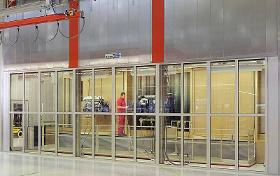
RIPPERT ANLAGENTECHNIK GMBH & CO. KG
Germany
Standard advantages: RTS-Rotation – low-maintenance dry spray booth Overspray dry separation demonstrates its strengths in practice above all when relatively large quantities of paint have to be processed and the overspray portion cannot be reduced any further. Spray booth with dry separation are usually equipped with disposable filters or manually regenerative filters. These cause costs for spare filters, maintenance and disposal. In addition to that, operation has to be interrupted in order to exchange the filters. The ‘RTS rotation’ system was developed by Rippert in order to reduce these costs and tooling times. Maintenance intervals and filter service lives are prolonged significantly in comparison with conventional systems due to the new brush pre-filtration. How the ‘RTS-Rotation’ system works Overspray separation in the RTS-Rotation system takes place by means of a pre-filter and a fine filter stage. The pre-filter stage is formed by vertical, slowly rotating brush rollers. The bristles present a very large total surface area and absorb the adhesive particles from the overspray. During the slow rotation, the paint particles can dry on the tips of the bristles. This results in slowly growing cakings on the bristles. Scrapers are mounted in the area behind the brush rollers that continuously remove these cakings from the bristles. The dislodged, hardened material falls into the drawers arranged under the brushes and can thus be simply disposed of. The dry paint dust may often be disposed of as ‘commercial waste’. The brushes otherwise require little maintenance and do not need to be exchanged or renewed. The fine filter stage is formed by a special fleece filter, which is arranged above the brush rollers and must be manually maintained or exchanged in the standard version. The maintenance intervals depend on the paint material used. Automatic cleaning or an external fine filter with automatic cleaning is also possible as an option. Over 10 years of operational experience shows that around 75 to 95% of the overspray is separated out by the pre-filter stage and the rest by the fine filter stage. The degree of separation depends strongly on the type of paint and the drying reactivity during the flying phase. Use of the RTS-Rotation with the following paints Before practical use, the paints are tested and approved in Rippert’s own pilot plant. Stove enamels and 100% UV paint systems cannot be used. The horizontal version Furthermore, it is possible to use the system as a horizontal underfloor extraction system. This version is used, for example, by a machine manufacturer for large parts. In addition, a drag conveyor with gulley extraction is used there in order to automatically transport the particles cleaned off the brushes out of the pit. Conclusion The RTS-Rotation system is particularly useful when relatively large quantities of paint with an unavoidable overspray portion have to be processed, as otherwise a great deal of residual waste would result using conventional technology. Compared to water-sprinkled spray walls and normal dry spray booths the amortisation period is shorter; it is frequently less than two years.
Request for a quote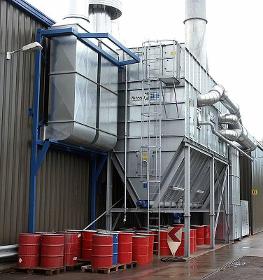
RIPPERT ANLAGENTECHNIK GMBH & CO. KG
Germany
With high-quality filter tubes and PTFE diaphragms. Paint dust filters Wet painting also results in overspray. Overspray is the solid portion of the paint that is not taken up by the workpiece. According to the purpose of use, the overspray is moist and sticky immediately after release. It is captured by the exhaust air stream in the spray booth and fed to a filter. This can be, for example, a baffle plate filter, paper filter, fleece filter, glass fibre filter or also combinations of these. The adhesive effect causes the paint particles to adhere to the contact surfaces of the respective filter medium, as a result of which a good degree of separation is achieved. However, all these filters are storage filters, i.e. the filters clog up more and more during operation and cannot be regenerated. A filter exchange becomes necessary if the exhaust air rate of the spray booth falls below the minimum. This can be very time-consuming under certain circumstances and the work process must be interrupted in order to do it. To make things worse, not only must the filtered and bound paint residues be disposed of, but also the actual filter materials. Such tooling times are not justifiable for automatic, continuous or multi-layer painting processes. Continuous procedures such as automatically cleaned filters are likewise required for this. The humidity and the adhesiveness of the particles to be filtered are thereby the problem. In order to solve this problem, the paint particles should be relieved of their adhesive capability as far as possible whilst still inside the paint booth. Our patented ‘RTS-Rotation’ system is outstandingly well suited for this. The system is comprised of slowly rotating brush rollers, which take up the adhesive paint particles on the surface of the bristles and allow them to dry there. The bristles are automatically regenerated at pre-specified time intervals by combing devices that swing in at the rear of the brush rollers. The dislodged paint residues can then be removed and disposed of either manually during work breaks or automatically during operation. The degree of separation of this system is, however, insufficient to satisfy the environmental protection requirements concerning residual dust content in the exhaust air. A further filter stage is necessary for that. It must be assumed that the paint particles arriving here are to a certain extent still damp and sticky. For this we use special paint dust filters with high-quality filter tubes with PTFE diaphragms. If necessary, precoating agents (auxiliary dust) are used in order to neutralise the adhesive capability of the particles and to keep the dust layer on the filter elements permeable to air. The precoating agent is injected into the raw air pipe by means of special dosing units. The filter tubes are cleaned by means of compressed air impulse cleaning. The use of this technology requires special know-how. We have had the appropriate experience for almost ten years. The implemented plants have capacities ranging from 5,000 to 90,000 m³ /h. Because of the large number of different paint systems, individual experiments are usually necessary in our pilot plant in order to find the correct solution for the individual case.
Request for a quote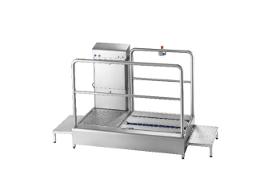
EACTECH®
Portugal
The equipment that guarantees total hygiene and safety control The Pass-120 Boot Sanitizing Station is a disinfection equipment that guarantees strict hygiene control of the operator's boots. With automatic soap dosing system and two rotating brushes 700 mm long and 170 mm in diameter. This equipment is very easy to implement, has an ergonomic design and an input and output system controlled by photocells. The most competitive price-quality ratio on the market Automatic soap dosing Entry and exit step controlled by photocells 700 mm long rotating brushes Footwear sanitized in milliseconds Stainless steel construction Cabinet with lock for the disinfectant bottle
Request for a quote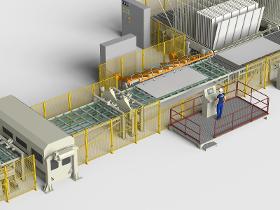
SIEMPELKAMP MASCHINENFABRIK GMBH
Germany
The boards are trimmed, cleaned, checked and (if necessary) cooled in the nishing line. Features, function Any excess material caused by the decorative paper being larger than the carrier board is removed from edges on the nished boards in the edgetrimming unit. Rotating brushes then remove any residues that are clinging to the surface. A member of sta will visually assess the quality of the coated board on both sides at the inspection station. The boa station so that it can be inspected from the bottom. The board is then placed in the stack appropriate for its quality Advantages The modular design allows basic modules and optional modules to
Request for a quote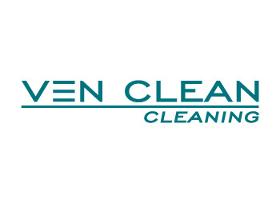
VENJAKOB MASCHINENBAU GMBH & CO KG
Germany
Dust removal devices remove adhering dust particles from the workpieces by means of rotating blowing nozzles. The use of ionisation units enables the removal of electro-static charges from the plastic surface, which promote the adhesion of dust. In order to improve operation, the ionisation unit is combined with a dust removal/blow-off device. In the wood sector, this is generally integrated in the line without ionisation unit or installed directly downstream of a brush sanding/denibbing machine. We offer various dust removal/ionisation systems, according to the requirements of your production process. The COMFORT and PERFECT versions are additionally equipped with a rotating genuine hair brush to remove soiling from the surface. We would be please to provide more detailed information concerning the equipment features upon request.
Request for a quoteResults for
Rotating brushes - Import exportNumber of results
13 ProductsCountries
Company type